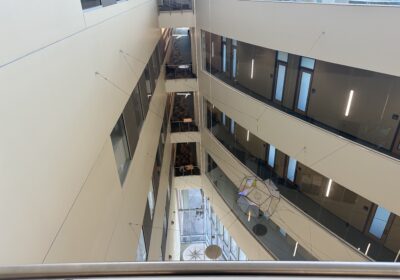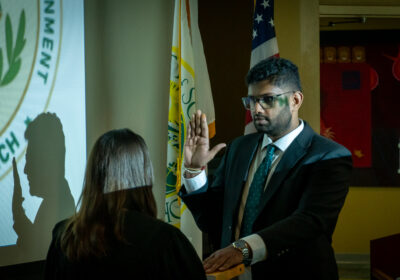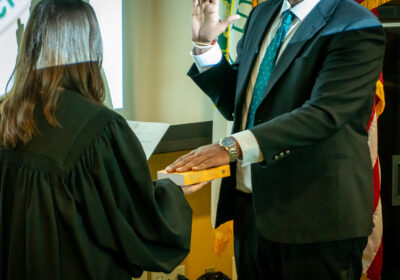USF campus leaders aim to maintain traditions post-consolidation
 While Student Government (SG) student body presidents know consolidation is inevitable, they are demanding nothing short of full inclusivity.
While Student Government (SG) student body presidents know consolidation is inevitable, they are demanding nothing short of full inclusivity.
Representing USF’s smallest campus, — about 2,000 students — Sarasota-Manatee Student Body President Isabelle Starner said it was important that the constitution allowed them to maintain campus traditions.
“The three of us have been working so closely together and have been in agreement for what is best for the student body, so we are very happy with where we are right now,” Starner said.
One of the traditions Starner said the campus does is wear green on Wednesdays to show “Bull Pride.” She also expressed that she didn’t want the close-knit community to fade away.
“It’s the little things that we have created [at Sarasota-Manatee] that we don’t want to lose,” she said.
St. Pete Student Body President Jazzy Duarte said she is making it a priority to voice her opinion to representatives and elected officials about keeping the traditions at the St. Pete campus.
“Campus culture doesn’t just stem from traditions, it comes from the community we built,” Duarte said in an email to The Oracle.
Although both branch campus presidents had concerns about its traditions, they are both satisfied with the finalized constitution.
The constitution was voted on by 1,340 students across all three campuses last week. Specifically, 1,156 (86 percent) people voted yes and 184 (14 percent) voted no.
However, these are the uncertified results as there may still be paper ballots in need of counting on the St. Pete campus, according to Tampa Student Body President Britney Deas.
Duarte said the St. Pete SG went through a line-by-line reading of the constitution draft to fully understand the content.
“The questions raised during the meeting stemmed from unfamiliar terms due to the differences between vocabulary across campuses, and how this would look in the future,” Duarte said.
To limit any issues with autonomy, Deas said it was agreed upon to have governors represent each campus and there will be a federal and local system in place.
Deas said one of the main priorities for the Tampa campus was making sure there was equity throughout.
Because of that, there had to be some compromise.
Based on percentages for dividing the SG nine associate justices, the St. Pete and Sarasota-Manatee campuses each made up less than one percent, which would have equated to less than one seat.
This would have meant that there would have been seven justices at Tampa, one at St. Pete and one at Sarasota-Manatee.
“In that way, [the campuses] didn’t even make up one seat,” Deas said. “It is well-known that Tampa has the most amount of students so we wanted to make sure there was an equal opportunity.”
Instead, the SGs decided on five at Tampa, two at St. Pete and two at Sarasota-Manatee.
Deas and Starner said they have not received any concerns yet from the student body, but the same could not be said for Duarte.
“A lot of students who expressed concerns were more so confused, they weren’t sure of what consolidation does to them and just wanted some answers,” Duarte said. “There were a lot of logistical questions that students had that affected their day-to-day life at the institution.”
One consolidation decision that is still up in the air is student fees, and all student body presidents don’t know yet what is to come.
For just the Tampa campus alone, about $17 million in Activity and Service (A&S) fees — a flat fee of $7 per semester and $12 per credit hour — are distributed to student organizations every year.
St. Pete students pay $25.63 in A&S fees and Sarasota-Manatee students pay $20.19 per credit hour, both with no flat fee, according to the Board of Governors 2019 Tuition and Fees Report.
“It is most likely going to be one pot of money and not separate but, then again, none of this is confirmed,” Deas said. “I only have heard about what is most likely going to happen instead of what will actually happen.”
Duarte is basing her assessment of student fees on USF President Steven Currall’s version 2.0 of the consolidation draft which says that the regional chancellors will have authority over their own budget on each campus.
“ … We’re just hoping that we can still have the opportunity to split our fees to where it’ll benefit our student body at [St. Pete],” Duarte said.
Since the constitution passed, SG is working on statutes to implement which will be voted on by the Senate in the future.
“This is all very new for everybody,” Deas said. “We can plan it out but we don’t really know how it will be until people are in their functioning roles next year.”






